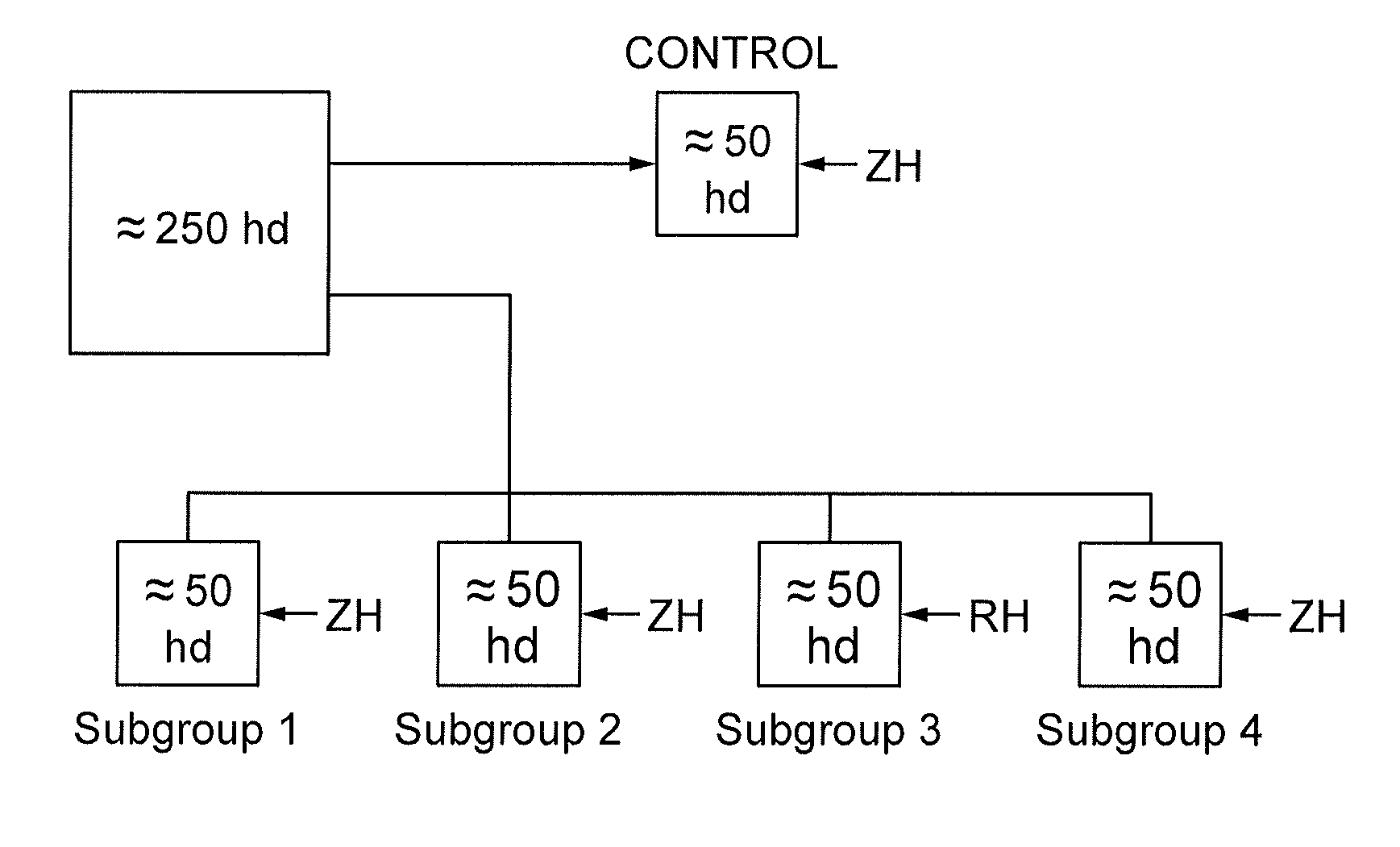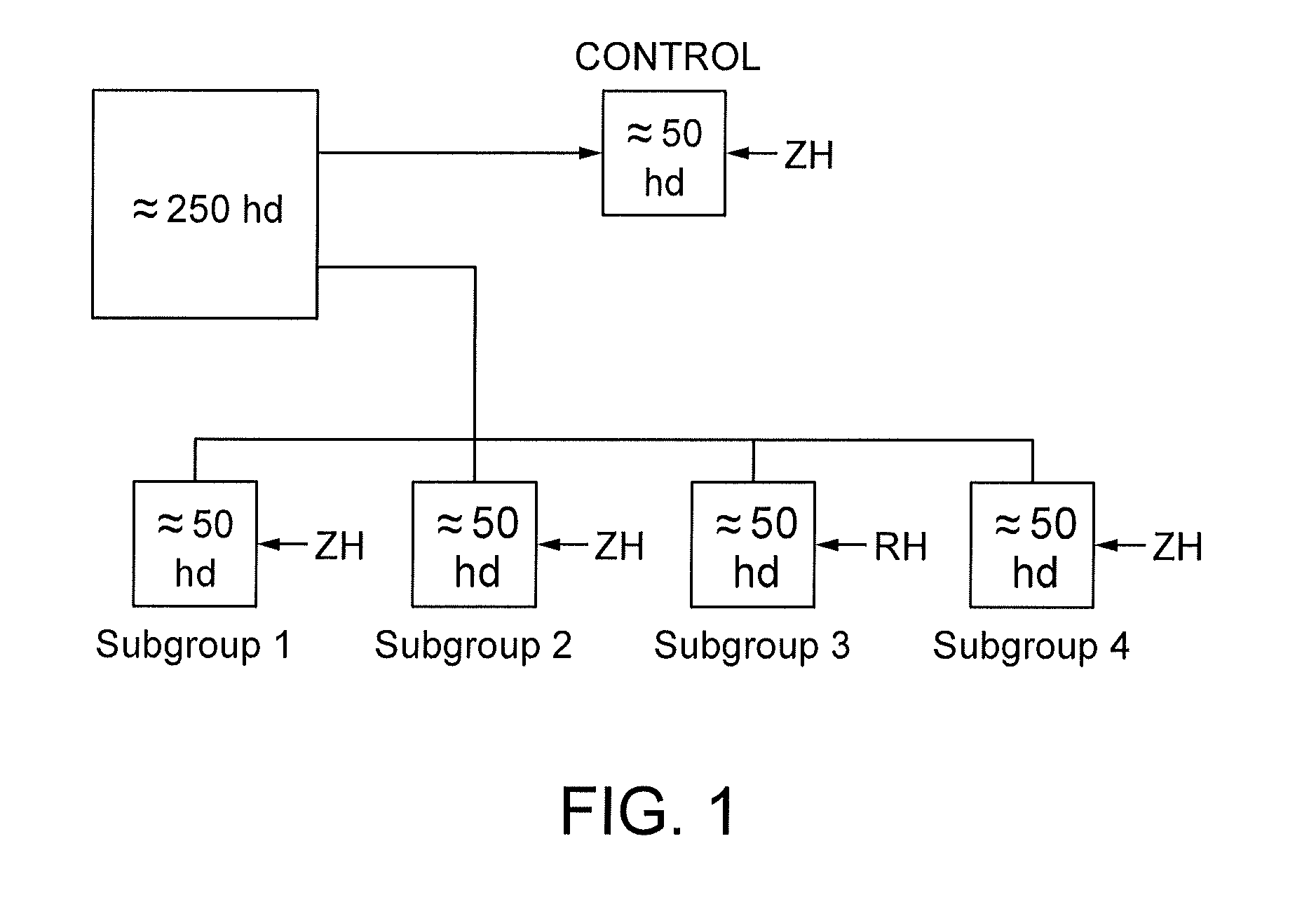Sorting System for Cattle
a sorting system and cattle technology, applied in the field of sorting system for cattle, can solve the problems of reducing profits, affecting the efficiency of feedlot operators, and a complex set of factors to consider, so as to achieve effective use of beta-adrenergic, increase advantage, and weight gain differences
- Summary
- Abstract
- Description
- Claims
- Application Information
AI Technical Summary
Benefits of technology
Problems solved by technology
Method used
Image
Examples
Embodiment Construction
[0037]The present invention provides a method of sorting, treating, and feeding a group of bovine animals in a feed lot. In one embodiment the method may comprise determining a weight of each animal, and comparing the weight of each animal with a weight of the other animals; determining whether each animal is a TT animal homozygous with respect to the T-allele of the ob gene, a CC animal homozygous with respect to the C-allele of the ob gene, or a CT animal heterozygous with respect to the T-allele and the C-allele of the ob gene; and determining a back fat measurement of each animal, and comparing the back fat measurement of each animal with a back fat measurement of the other animals.
[0038]The animals are then divided into subgroups where a first subgroup includes at least CC animals with comparatively less weight and back fat; a final subgroup includes at least TT animals with comparatively more weight and back fat; at least one intermediate subgroup includes animals with interme...
PUM
| Property | Measurement | Unit |
|---|---|---|
| weight | aaaaa | aaaaa |
| weight | aaaaa | aaaaa |
| color | aaaaa | aaaaa |
Abstract
Description
Claims
Application Information
 Login to View More
Login to View More - R&D
- Intellectual Property
- Life Sciences
- Materials
- Tech Scout
- Unparalleled Data Quality
- Higher Quality Content
- 60% Fewer Hallucinations
Browse by: Latest US Patents, China's latest patents, Technical Efficacy Thesaurus, Application Domain, Technology Topic, Popular Technical Reports.
© 2025 PatSnap. All rights reserved.Legal|Privacy policy|Modern Slavery Act Transparency Statement|Sitemap|About US| Contact US: help@patsnap.com


